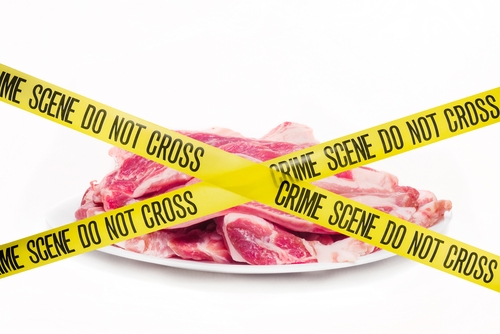
The number of reports of suspected cases of cross-border food non-compliance and food fraud in the European Union has jumped dramatically, a new European Commission report reveals.
According to the 2017 annual report of the EU Food Fraud Network and the System for Administrative Assistance and Food Fraud (AAC-AA and AAC-FF), there were 775 cases of suspected non-compliance and food fraud reported by EU member states in 2017. This was up from 243 cases reported in 2016.
The EU Food Fraud Network was set up to deal with cross-border food violations in the wake of the 2013 horsemeat scandal. In late 2015 a dedicated IT application known as the Administrative Assistance and Cooperation System (AAC), focusing on food fraud (AAC-FF) and other non-compliance (AAC-AA), was established to allow member states to request from, or the assistance of, another member state to pursue investigations or enforcement action in food fraud matters.
While there is no obligation to use the reporting and information requesting system, the European Commission notes that the increase in cases in 2017 reflects that member states are embracing the system and are “now in the habit of using the system to request information on suspected cases of non-compliance or food fraud from their counterparts in other EU countries”.
However, the number of cases does not represent the entirety of non-compliance and food fraud in the EU as it only focuses on cross-border cases and not cases at a national level, the EC said.
According to the report, there were 597 cases of non-compliance reported and 178 of suspected food fraud.
Germany and Austria had the most non-compliance cases, 164 and 135 respectively. The UK had 39 cases.
Mislabelling was the most common non-compliance violation listed in 2017, with 353 cases, followed by 162 cases of adulteration including replacement, dilution, addition or removal in product. There were also 114 cases of unapproved treatment and/or process and 54 cases regarding the non-compliance of documents.
For food fraud, France had 35 suspected cases, followed by Germany with 32 cases, and Italy with 26 cases.
For a case to be considered as suspected food fraud rather than non-compliance it must meet four criteria: violation of EU food and feed law; fraudulent intent rather than non-compliance by accident; economic gain; and deception of customers.
Based on this, in 2017 there were 88 cases of suspected food fraud related to mislabelling, 88 related to adulteration, 36 related to document violations, and 28 as a result of unapproved treatment and/or process.
Spain received the most requests for information or assistance regarding food fraud cases in other EU countries, with 52 requests, but, according to the report, the country had only responded to 29 of these. The Netherlands had 23 requests for information or assistance but only responded to three of these, while the UK received 10 requests about food fraud, responding to just three.
The report noted that the Commission ended up co-ordinating the action and intelligence of 16 cross-border cases concerning fraudulent practices in 2017. These included the fipronil egg contamination scandal where the illegal use of fipronil insecticide in poultry farms in the Netherlands resulted in contamination of eggs and poultry meat, affecting 40 countries worldwide.
The EC also co-ordinated activities around two cases of the illegal treatment of tuna, where tuna that should have been canned was sold as fresh tuna and where additives, both legal and illegal, were added to tuna to present it as fresh.
Lessons learned over the last year, particularly in the wake of the fipronil incident, resulted in 19 new measures agreed by the Commission and member states, which will make EU food fraud protection stronger, the EC said.
©
SecuringIndustry.com





